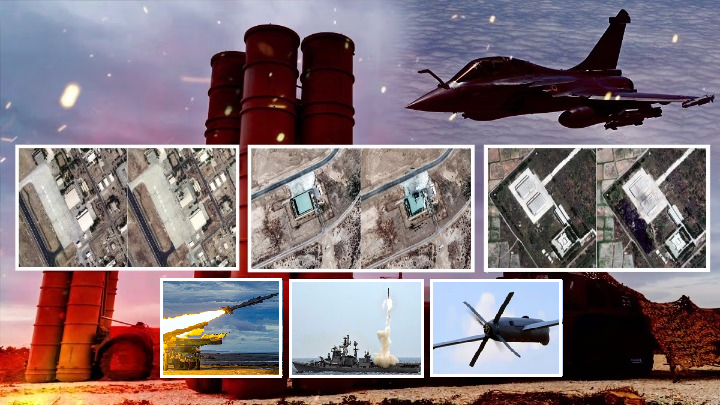
- India showed the political will and the tactical brilliance to showcase its conventional superiority and devastate Pakistani assets while keeping under the nuclear threshold.
- Talk of nuclear blackmail by the Pakistani leadership was countered by attacking their delivery sites at Chaklala and Sargodha.
- Indian actions on the western border compelled Pakistan to pull the 112th & 12th corps from Peshawar & Quetta to the Indian borders.
- Countries in Latin America & Africa will now scout the Indian defence industry for cost-effective & battle-tested weapon systems for their armed forces.
With the elections and subsequent government formation under Omar Abdullah, India signalled normalisation of law and order issues in October. 20The genocide conducted by Pakistan shattered this normalcy Pak Pakistan-sponsored terrorists in Pulwama on 22 Apr 25. 25 tourists were identified by their Dharma and then shot dead in an execution style. The act sent shockwaves in the country and refreshed memories of 1990. Pakistan, with this strike, had shown its ability to derail the peace process at will. India needed to respond strongly to deter any such misadventure from Pakistan again. It also needed to regain the lost momentum in J & K.
The 14 days that followed the genocide were used effectively to divert Pakistan’s attention using diplomatic/ political moves (IWT/Trade & Travel Sanctions). The fortnight was also effectively used to simulate attacks on pre-identified targets with weapon systems and plan for potential counters from Pakistan. A huge psychological operation was put up by the Ministry of Home called Exercise Abhyas, wherein Civil Defence mock drills were announced to be held in 244 districts, Pan India, on 07 May. Pakistan was deceived and expected kinetic action only after the completion of these mock drills. India used this cover to launch Operation Sindoor in the early hours of 07 May.
India used long-range missiles such as SPICE & Hammer to deliver successful strikes across 9 terrorist bases across Pakistan without intruding into Pakistani airspace. Pakistan responded with strikes against Indian military targets using missiles and drones. India then struck decisive blows against Pakistan’s AD radars and HQ 9 missile system (Lahore). Destruction of AD radars and missile systems left huge gaps in Pakistan’s airspace, which was subsequently exploited by India to deliver devastating strikes on 11 airfields spread across Pakistan. Targets included strategic airfields like Chaklala, Sargodaha and Bholera. As both countries have agreed to hold fire and war clouds have moved away, it is time to dwell on the tactical and strategic gains made by India in this 96 hr operation.
AKASHTEER, BRAHMOS & AKASH have taken the global weapons market by surprise.
Tactical Precision
- Weapons tested: Post 2019, the Armed Forces recognised the need for long-range weapon systems and initiated both indigenous and foreign procurement. It is easy to procure weapon systems, but extremely challenging to integrate them into the ORBAT (Order of Battle). Units need to be trained, SoPs need to be drafted, etc. India has a full spectrum of weapon systems from home-grown to Western & Russian. These weapon systems come with their standards and are not compatible. Credit to the Armed Forces who have used the last 5-8 years to integrate these disparate systems into one homogenous one.
- Escalation Dominance: India proved to Pakistan and the world that it had the escalation dominance wrt Pakistan. Threats of saturating Indian AD with missiles/Drones by Pak proved to be hollow. India showed that there were no holy cows in Pakistan by attacking GHQ and strategic airfields deep inside Pakistan. Precise and devastating strikes on Bahawalpur and Muridke demoralised LeT and Jaish cadres. Pakistan had no conventional answer to India’s escalation after its missile strike was successfully brought down on 09 May.
- Radar networking: India, about a decade back, embarked on an ambitious exercise to create a situational air picture by stitching all AD radar pictures (IAF/IA/Civil/Navy). This created an overlapping radar coverage across the Indian airspace, which proved too high a wall for Pakistan to penetrate.
- Upgraded weapon systems: India learnt from Israel’s costly defence against Hamas rockets. Defence against cheap drones with missiles was not going to work between peer countries. India instead upgraded its legacy Anti-Aircraft (AA guns) such as L 70 & Zu 23 with electro-optical sensors. These upgrades kept the guns relevant and provided a low-cost solution to the cheap drones from Pakistan.
- Tactical superiority: India used drones with RCS (Radar cross section) similar to Su 30 & Rafale to confuse and saturate Pakistan Air Defence. Pakistan hit these drones and believed that it had hunted down Rafales. Wonderful tactics were deployed to confuse and overwhelm the enemy.
- Drones to the fore: India showcased its ability to absorb new weapon systems, such as Kamikaze drones, with aplomb in this operation. HAROP and sky striker drones proved to be vastly superior to the low-cost drones used by Pakistan. Pak Air Defence was also found wanting in its defence against these drones. Defensively, the Indian counter-drone strategy using AA guns and AKASH missiles proved more than adequate.
Operation Sindoor showcased the Indian Armed Forces in their finest.
Strategic Ascendancy
- Redefining red lines: Indian response in Operation Sindoor has rewritten the rules between the two countries. India has shown its willingness to hit at the heart of the paki establishment including its nuclear infrastructure. Shift from deterrence to direct action against the establishment is likely to lead to recalibration of options by Pakistan.
- Erosion of the Pak Army aura: Pakistan, despite its military defeats in previous wars, has been successful in creating an aura as the protector of the state in the eyes of Pakistani citizens. Previous actions by India (2016 /19) were not against terrorist infrastructure, mostly in remote areas. Operation Sindor’s attack on the Pak armed forces targets was seen and recorded by countless Pakistani citizens. The invincibility of Pak armed forces was shattered emphatically in the eyes of its citizens post the operation.
- Era of Indian Defence Industry: The success of weapon systems such as AKASHTER/BRAHMOS & AKASH has taken the global weapons market by surprise. This is contradictory to overhyped Chinese weapon systems such as PL 15/HQ 9/JF 10, which failed miserably. Countries in Latin America & Africa will now scout the Indian defence industry for cost-effective & battle-tested weapon systems for their armed forces. This heralds the beginning of a boom in the Indian defence industry.
- Intelligence: Operation showcased that India had effective intelligence in Pakistan, including its nuclear asset sites. The precision strikes by the armed forces showcase that the integrated weapon cycle is synchronised and working well.
- Working under the nuclear umbrella: India showed the political will and the tactical brilliance to showcase its conventional superiority and devastate Pakistani assets while keeping under the nuclear threshold. Talk of nuclear blackmail by the Pakistani leadership was countered by attacking their delivery sites at Chaklala and Sargodha.
- Creating space for BLA: Indian actions on the western border compelled Pakistan to pull the 11th & 12th corps from Peshawar & Quetta to the Indian borders. This gave operational freedom to the BLA to capture territory and declare independence (to be recognised by the world). India has thus created avenues for future operations.
Operation Sindoor showcased the Indian Armed Forces in their finest. The synergy, planning and training were exceptional, which brought rich dividends both in tactical and strategic domains. However, the dividends will not last long. Indian armed forces should be prepared to initiate strikes at short notice and increase the cost on the Pakistani establishment. In the meantime, let us salute our heroes.
Jai Hind.
Wing Commander Rajeev KS (Retired) is a seasoned ICT professional with 23 years of expertise in IP/MPLS networks, tactical communication, VoIP, data centre technologies, solution design, and program management across aerospace and defence sectors. He can be reached at raaka08@gmail.com. Views expressed are the author’s own.
